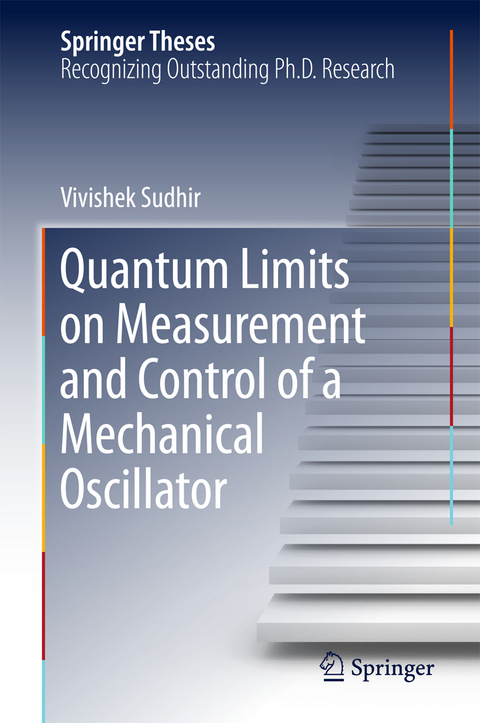
Quantum Limits on Measurement and Control of a Mechanical Oscillator
Seiten
2017
|
1st ed. 2018
Springer International Publishing (Verlag)
978-3-319-69430-6 (ISBN)
Springer International Publishing (Verlag)
978-3-319-69430-6 (ISBN)
This thesis reports on experiments in which the motion of a mechanical oscillator is measured with unprecedented precision. The position fluctuations of the oscillator-a glass nanostring-are measured with an imprecision that is sufficient to resolve its quantum zero-point motion within its thermal decoherence time. The concomitant observation of measurement back-action, in accordance with Heisenberg's uncertainty principle, verifies the principles of linear quantum measurements on a macroscopic mechanical object. The record of the measurement is used to perform feedback control so as to suppress both classical thermal motion and quantum measurement back-action.
These results verify some of the central and long-standing predictions of quantum measurement theory applied to a macroscopic object. The act of measurement not only perturbs the subject of the measurement-the mechanical oscillator-but also changes the state of the light used to make the measurement. This prediction is verified by demonstrating that the optical field, after having interacted with the mechanical oscillator, contains quantum correlations that render its quadrature fluctuations smaller than those of the vacuum - i.e., the light is squeezed.
Lastly, the thesis reports on some of the first feedback control experiments involving macroscopic objects in the quantum regime, together with an exploration of the quantum limit of feedback control. The book offers a pedagogical account of linear measurement theory, its realization via optical interferometry, and contains a detailed guide to precision optical interferometry..
These results verify some of the central and long-standing predictions of quantum measurement theory applied to a macroscopic object. The act of measurement not only perturbs the subject of the measurement-the mechanical oscillator-but also changes the state of the light used to make the measurement. This prediction is verified by demonstrating that the optical field, after having interacted with the mechanical oscillator, contains quantum correlations that render its quadrature fluctuations smaller than those of the vacuum - i.e., the light is squeezed.
Lastly, the thesis reports on some of the first feedback control experiments involving macroscopic objects in the quantum regime, together with an exploration of the quantum limit of feedback control. The book offers a pedagogical account of linear measurement theory, its realization via optical interferometry, and contains a detailed guide to precision optical interferometry..
Prologue.- Foundations.- Measurement-Based Control.- Quantum Correlations.- Epilogue.
| Erscheinungsdatum | 28.12.2017 |
|---|---|
| Reihe/Serie | Springer Theses |
| Zusatzinfo | XIX, 214 p. 46 illus., 43 illus. in color. |
| Verlagsort | Cham |
| Sprache | englisch |
| Maße | 155 x 235 mm |
| Gewicht | 520 g |
| Themenwelt | Naturwissenschaften ► Physik / Astronomie ► Optik |
| Naturwissenschaften ► Physik / Astronomie ► Quantenphysik | |
| Naturwissenschaften ► Physik / Astronomie ► Theoretische Physik | |
| Schlagworte | Cavity Optomechanics • Laser Interferometry • Precision measurements • Quantum Control • Quantum Correlations • quantum measurements • Squeezed Light • Standard Quantum Limit |
| ISBN-10 | 3-319-69430-8 / 3319694308 |
| ISBN-13 | 978-3-319-69430-6 / 9783319694306 |
| Zustand | Neuware |
| Haben Sie eine Frage zum Produkt? |
Mehr entdecken
aus dem Bereich
aus dem Bereich
Grundlagen - Verfahren - Anwendungen - Beispiele
Buch | Hardcover (2022)
Hanser, Carl (Verlag)
CHF 69,95
Grundlagen und Anwendungen
Buch | Hardcover (2023)
Hanser, Carl (Verlag)
CHF 83,95


